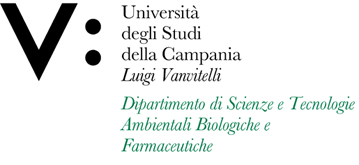Maria Laura MASTELLONE
Insegnamento di INGEGNERIA DELLE REAZIONI CHIMICHE E BIOCHIMICHE
Corso di laurea in BIOTECNOLOGIE
SSD: ING-IND/25
CFU: 6,00
ORE PER UNITÀ DIDATTICA: 48,00
Periodo di Erogazione: Secondo Semestre
Italiano
| Lingua di insegnamento | ITALIANO |
| Contenuti | Il corso fornisce le nozioni di base per la determinazione della velocità con cui i sistemi reagenti promuovono la conversione dei reagenti in prodotti all’interno di reattori. La determinazione della velocità reale con cui un processo arriva al massimo grado di conversione compatibile con le condizioni operative è quindi determinato sulla base dello studio delle seguenti nozioni: |
| Testi di riferimento | Testi principali: |
| Obiettivi formativi | Gli obiettivi del corso sono: |
| Prerequisiti | Lo studente deve avere conoscenze solide di: |
| Metodologie didattiche | La didattica è fornita tramite lezioni frontali durante le quali la teoria e l’applicazione calcolativa sono inscindibili. |
| Metodi di valutazione | L’esame è in forma scritta. |
| Altre informazioni | Lo studente deve sempre presentarsi a lezione portando con sé una calcolatrice scientifica e le tabelle e i grafici relativi alle proprietà chimico-fisiche (forniti dal Docente). |
| Programma del corso | In dettaglio, i contenuti affrontati durante le lezioni sono riportati di seguito: |
English
| Teaching language | Italian |
| Contents | This course provides the basics for determining the rate at which reagent systems promote the conversion of reagents into products within reactors. The determination of the actual speed at which a process reaches the maximum degree of conversion compatible with the operating conditions is then determined on the basis of the study of the following notions: |
| Textbook and course materials | Main books: |
| Course objectives | The objectives of the course are: |
| Prerequisites | The student must have solid knowledge of: |
| Teaching methods | Teaching is provided through frontal lessons in which theory and computational application are inseparable. |
| Evaluation methods | The exam is in written form. |
| Other information | The student must attend the lessons carrying a scientific calculator and tables and graphs relating to the chemical-physical properties (provided by the Teacher). |
| Course Syllabus | In detail, the contents addressed during the lessons are given below: |








